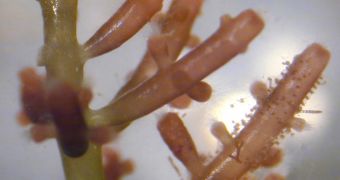Researchers at the Syracuse University show in a new research that promoting the acceleration of algae growth is possible through the use of light particles called photons.
The group says that the method relies on using a very special type of light-manipulation technique, that is derived from nanotechnology.
From the study, it became obvious that creating efficient biofuel production methods is now possible.
In other words, the innovation could help promote renewable energy and an environment-conscious attitude. The only reason why alternative energy is not widely adopted is its reduced efficiency.
Oil, natural gas and coal are currently easy and cheap to extract, and they can be used to produce electricity, heat and fuels for various vehicles. This is not possible with existing biofuel production methods.
“Algae produce triglycerides, which consist of fatty acids and glycerin. The fatty acids can be turned into biodiesel while the glycerin is a valuable byproduct,” explains Radhakrishna Sureshkumar.
The expert is a professor at SU, and also the chair of biomedical and chemical engineering in the L.C. Smith College of Engineering and Computer Science.
He conducted this investigation with the aid of Satvik Wani, a PhD student in chemical engineering.
“Molecular biologists are actively seeking ways to engineer optimal algae strains for biofuel production. Enhancing the phototropic growth rate of such optimal organisms translates to increased productivity in harvesting the feedstock,” the expert adds.
The team says that efficiency, economical production and ecological sustainability are the three main goals that all researchers hope to derive from biofuel production.
Tweaking the growth process of algae using nothing but light could represent a much-needed push in the right direction, the Syracuse group believes.
What the experts did was create a type of accelerate photosynthesis, which is the process plants use to produce energy and oxygen by taking in nutrients from the ground, sunlight and carbon dioxide.
Full details of how the method functions appear in the August issue of the esteemed scientific journal Nature Magazine. The main element of the method is a novel kind of bioreactor.
The researchers managed to create particles at the nanoscale, that are capable of scattering blue light – necessary for algal metabolism – with great efficiency. The organisms therefore grow faster.
“Implementation of easily tunable wavelength specific backscattering on larger scales still remains a challenge, but its realization will have a substantial impact on the efficient harvesting of phototrophic microorganisms and reducing parasitic growth,” Sureshkumar reveals.
“Devices that can convert light not utilized by the algae into the useful blue spectral regime can also be envisioned,” he concludes.

 14 DAY TRIAL //
14 DAY TRIAL //